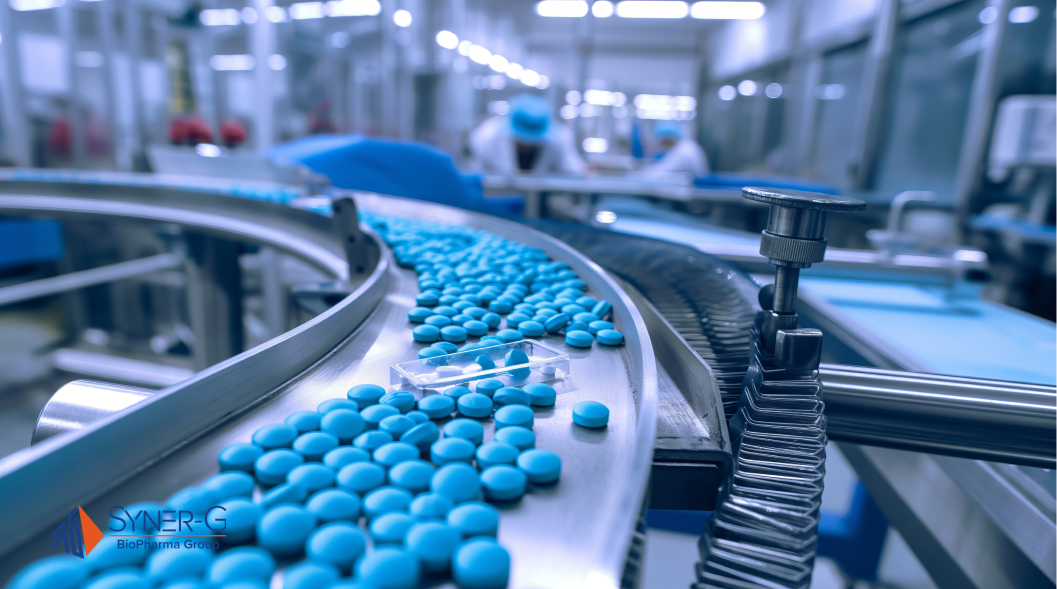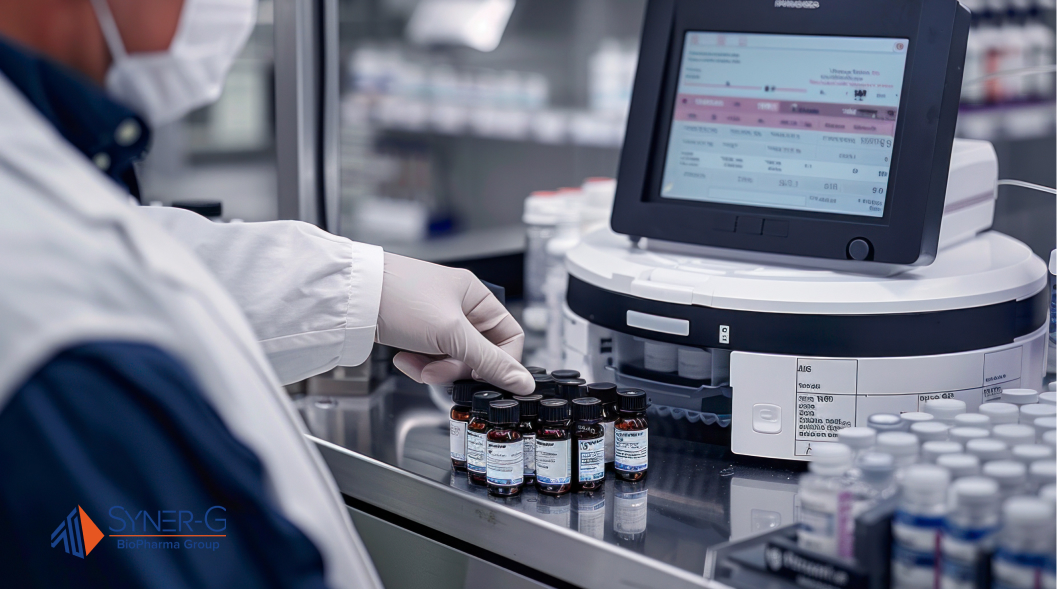What is process control? Process control is the backbone of precision in manufacturing, providing the framework needed to maintain quality, safety, and efficiency. In the biopharmaceutical industry, even minor deviations can have significant consequences; process control plays a vital role in ensuring consistent outcomes. This article explores the principles, components, and transformative innovations shaping process control in biopharma today.

The Basics of Process Control
Process control is a cornerstone of modern manufacturing, blending scientific precision with practical application to ensure consistent, high-quality outcomes. Safety and efficacy are non-negotiable. Process control becomes indispensable in maintaining the delicate balance required for producing life-saving medications. While industrial process control might focus on maintaining quality in a car assembly line or refining crude oil, in biopharma, it safeguards the delicate balance required to produce medications that meet stringent safety and efficacy standards.
Breaking Down the Concept
Process control involves monitoring and managing variables within a production system to maintain optimal conditions and confirm consistency. Imagine it as the scientific equivalent of a symphony conductor, orchestrating each element to work in perfect harmony—only in this case, the variables are temperature, pH, pressure, and other critical factors.
In biopharma, this concept takes on heightened importance. For example, the production efficiency of biologics requires precise control over conditions in bioreactors, where living cells grow and produce therapeutic proteins or antibodies. Parameters like oxygen levels, nutrient supply, and agitation must be carefully monitored and adjusted to achieve desired output.
While process control is utilized across industries such as food production and energy, its application in biopharma is particularly critical. Here, even minor deviations can result in compromised product quality or regulatory noncompliance in process industries, with potential consequences for patient safety.
Why Process Control Matters in Biopharma
In biopharmaceutical manufacturing, process control guarantees that every product meets stringent standards for quality and safety. This is not just a technical necessity; it’s a scientific and ethical imperative.
Patient safety hinges on the precision of process control. A medication must meet exact specifications to function as intended without causing harm. For instance, in injectable drugs, a deviation in pH could render the product unsafe, leading to adverse patient reactions. Robust process control systems safeguard against such risks by continuously monitoring and adjusting critical process variables.
Regulatory compliance is another vital consideration. Agencies like the FDA and EMA demand thorough documentation and strict adherence to quality guidelines. To meet these requirements, advanced process control systems provide real-time data and historical records for transparency and traceability.
Process control also significantly benefits operational efficiency. By automating adjustments, minimizing waste, and reducing errors, companies can optimize production while maintaining quality. This efficiency is crucial in meeting global demand for medications without compromising safety or efficacy.
Consider the impact of deviations: studies suggest that up to 75% of pharmaceutical product recalls are linked to manufacturing process inconsistencies. Deviations from Current Good Manufacturing Practices (cGMP), including issues like contamination and sterility failures, are significant contributors to drug recalls. For instance, in January 2023 alone, cGMP deviations led to 13 recall events affecting approximately 11.88 million units of pharmaceutical products.
This underscores the critical role of stringent process control in mitigating risks and ensuring that high-quality, life-saving medications reach patients safely.
The Key Components of Process Control
Several key components in any process control system work together seamlessly to monitor, adjust, and maintain optimal conditions. These elements—measurement tools, controllers, and actuators—serve as the eyes, brains, and hands of the system.
Measurement Tools: The Eyes of the Process
Measurement tools are the foundation of any process control system, acting as the “eyes” that gather critical data about the state of a process. Instruments like pH meters, pressure sensors, and flow rate monitors continuously capture information about key process parameters. For example, in biopharmaceutical manufacturing, a pH meter might monitor the acidity of a bioreactor to confirm optimal conditions for cell growth.
The accuracy of these tools is essential. Precise measurements allow operators and systems to detect even the smallest variations that could impact product quality. Without reliable measurement data, achieving process integrity would be impossible, as any incorrect readings could lead to inappropriate adjustments and, ultimately, product inconsistencies or failures.
Controllers: The Brain Behind the Operation
Controllers serve as the “brains” of a process control system, interpreting data from measurement tools and determining the appropriate course of action. A common type is the PID controller (Proportional-Integral-Derivative), which makes real-time adjustments based on deviations from a set target. Advanced systems can even incorporate machine learning control algorithms to optimize processes over time.
To keep it simple, if a measurement tool detects a parameter, such as temperature, drifting away from its ideal range, the controller processes this information and decides how to correct it. Think of it as a thermostat that reads the room temperature and adjusts the heating or cooling system to maintain comfort. In biopharma, these systems ensure that delicate processes remain stable, even under fluctuating conditions.
Actuators: The Hands That Execute
Actuators are the “hands” of a process control system, responsible for physically carrying out the adjustments dictated by the controller. These devices include valves, pumps, and motors, which directly interact with the process to enforce changes.
For example, if a temperature sensor detects a bioreactor overheating, the controller might signal an actuator to open a cooling control valve. This control action allows cold water to flow through the system, bringing the temperature back to its optimal range.

Types of Process Control
Process control systems can be classified into different types based on how they manage and respond to data. Comprehending these distinctions helps illustrate how modern technologies have revolutionized precision and efficiency in biopharma manufacturing.
Open-Loop vs. Closed-Loop Control
The fundamental difference between open-loop and closed-loop control lies in feedback. Open-loop systems operate without feedback; they perform a task but don’t verify if the desired outcome is achieved. For example, cooking pasta with a timer but never tasting it is akin to an open-loop system—it relies solely on preset instructions.
In contrast, closed-loop control incorporates feedback, continuously monitoring results, and making necessary adjustments. This is like tasting the pasta while cooking and adding more salt if it’s bland. In biopharma, closed-loop systems are essential for maintaining consistency, especially in processes like fermentation or sterilization, where small deviations can have significant consequences.
Closed-loop systems offer clear advantages, particularly in ensuring product quality and compliance. By automatically correcting deviations, they reduce the risk of errors and improve efficiency. This approach is critical in biopharma, where even minor variations in temperature, pH, or pressure can compromise a drug’s safety or efficacy.
Manual vs. Automated Control
Historically, process control relied heavily on manual intervention, where operators adjusted settings based on observations and experience. While effective to a point, manual control is prone to human error and lacks the speed and precision required for complex manufacturing processes.
The shift to automation has transformed biopharma manufacturing. Advanced technologies like Distributed Control Systems (DCS) now enable centralized management of multiple processes, allowing for real-time monitoring and automated adjustments. For instance, a DCS can oversee the entire production line, from monitoring bioreactor conditions to controlling downstream purification steps, all while logging data for regulatory compliance.

Applications of Process Control in Biopharma
Process control is the backbone of biopharmaceutical production, making sure that every step, from raw materials to final products, meets the industry’s exacting standards. Its applications span quality assurance, operational efficiency, and regulatory compliance, making it indispensable in creating safe and effective treatments.
Ensuring Quality in Drug Manufacturing
Process control plays a vital role in maintaining high-quality standards in biopharmaceutical production.
- Precision in bioreactors: Parameters like temperature, pH, and oxygen levels are closely monitored and adjusted to create optimal conditions for cell growth and protein production.
- Consistency across batches: Automated systems make sure that every batch is produced with identical conditions, minimizing variability.
- Real-time adjustments: Continuous feedback allows immediate corrections if a parameter deviates from the ideal range, safeguarding product integrity.
Improving Efficiency and Reducing Costs
Modern process control systems enhance operational efficiency while reducing overall costs.
- Automation: Streamlined production through automated controls reduces manual intervention, leading to faster cycle times and lower labor costs.
- Predictive analytics: Advanced systems can predict potential issues, such as equipment malfunctions or parameter drift, enabling proactive maintenance and reducing downtime.
- Minimized waste: Process control limits material losses and guarantees optimal resource use by maintaining precise conditions.
Compliance with Regulatory Standards
Robust process control systems are critical for meeting stringent regulatory requirements set by organizations like the FDA and EMA.
- Consistent monitoring: Automated systems collect and record data continuously so that processes remain within regulatory parameters.
- Audit readiness: Comprehensive documentation and data trails simplify the audit process and demonstrate adherence to quality standards. For example, automated temperature logs in a sterilization process provide evidence of compliance with required conditions.
- Avoiding costly recalls: By preventing deviations, process control reduces the likelihood of regulatory violations that could result in product recalls or production halts.
Related Article: CMC Safety and Efficacy in Gene and Cell Therapies
Challenges and Innovations in Process Control
As essential as process control is to biopharmaceutical manufacturing, it is not without its challenges. However, continuous innovation is paving the way for overcoming these obstacles and shaping a future of unprecedented precision and efficiency.
Overcoming Common Challenges
Process control systems face several technical and operational challenges that can impact their effectiveness. One common issue is sensor calibration errors, where inaccurate readings can lead to deviations in critical parameters. Regular calibration schedules and the adoption of advanced self-diagnosing sensors help address this problem for measurement accuracy.
Cybersecurity risks also pose a significant threat, particularly in automated systems connected to networks. These systems are vulnerable to cyberattacks, which could compromise sensitive data or disrupt manufacturing processes. To mitigate these risks, manufacturers implement robust cybersecurity measures, such as encryption, firewalls, and frequent security audits.
Another challenge lies in the reliability of equipment, such as actuators and controllers, which can fail and cause production disruptions. Redundancy systems, such as backup actuators, combined with predictive maintenance control strategies, reduce the likelihood of downtime by identifying and addressing potential failures before they occur. By tackling these challenges proactively, manufacturers can enhance the reliability and resilience of their process control systems.
The Future of Process Control in Biopharma
The next wave of innovations promises to take process control to new heights, enhancing both the quality and efficiency of biopharmaceutical manufacturing:
- AI-driven process optimization: Artificial intelligence can analyze vast amounts of process data, identifying patterns and suggesting adjustments to improve outcomes in real-time.
- Real-time release testing (RTRT): This approach enables quality assurance during production, reducing the need for post-production testing and accelerating time-to-market.
- Cloud-based monitoring: Centralized, cloud-connected systems allow for remote monitoring and control, improving accessibility and enabling real-time collaboration across global teams.
- Digital twins: Virtual models of physical systems simulate processes to predict and prevent issues before they occur, optimizing efficiency and reducing risks.
Mastering the Art of Precision in Biopharma Manufacturing
Process control is essential for the consistency, safety, and quality of biopharmaceutical products. It combines scientific accuracy with cutting-edge technology to optimize production and maintain compliance with stringent industry standards. Emerging innovations such as AI-driven optimization and digital twins are set to elevate process control to new levels of efficiency and reliability. Continuing to understand what process control is and it’s multifaceted applications highlights it’s transformative role in biopharma. This foundation enables the biopharma industry to meet growing global demands while continuing to push the boundaries of medical advancement.

